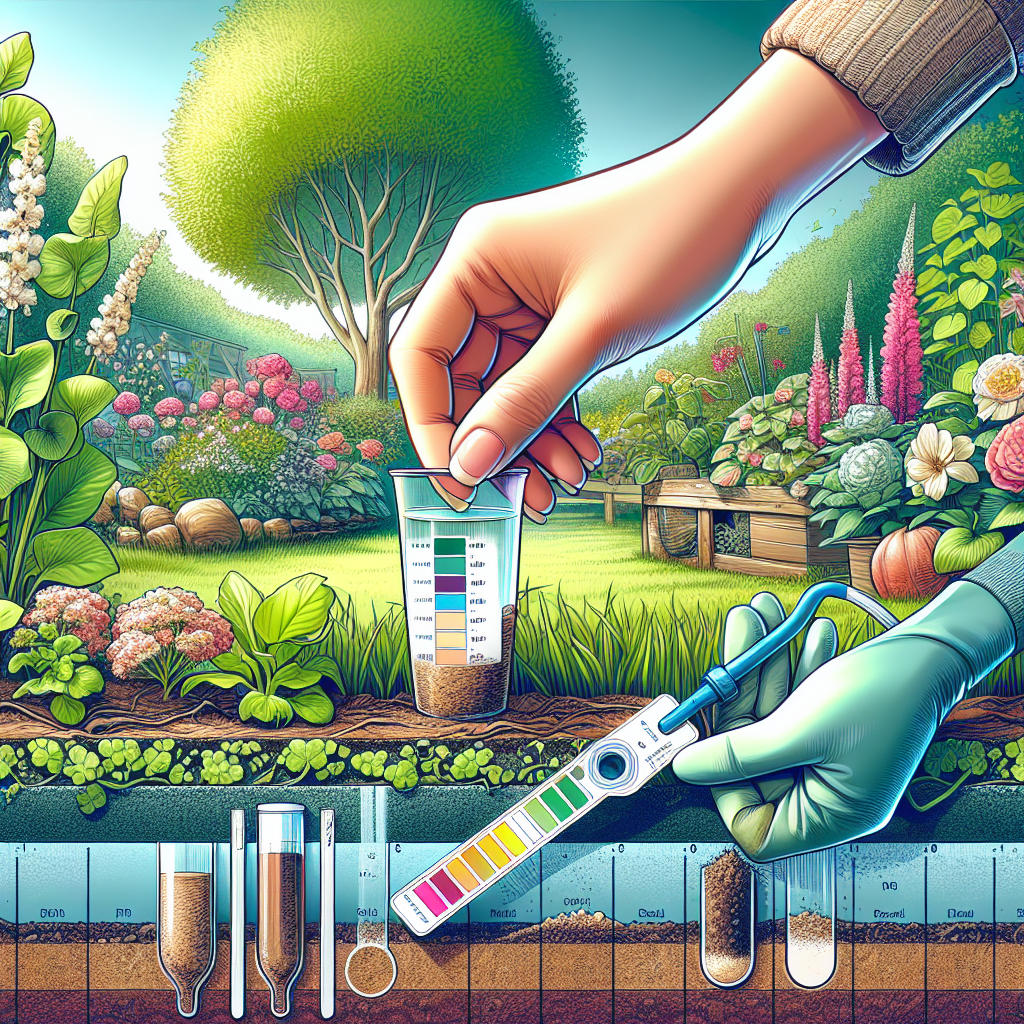Soil Testing: Understanding Your Garden’s Soil Health
Are you perplexed about why your garden isn’t thriving as you expected? The secret to a lush backyard could be just beneath the surface. Soil health is the foundation of vigorous plant growth, but it’s frequently overlooked by enthusiastic gardeners. In this post, we’ll unwrap the mystery of soil testing and guide you through comprehending the results to achieve gardening success.
Understanding the Importance of Soil Testing
Soil testing is like a medical checkup, but for your garden’s ground. It gives you a snapshot of the soil’s nutrient profile, pH level, and more. Much like you wouldn’t take random supplements without knowing what your body lacks, you should not fertilize or amend your garden soil without a clear understanding of its needs.
One primary reason gardeners should perform soil tests is that it can unveil deficiencies or excesses of vital nutrients. Nutrients like nitrogen, phosphorus, and potassium are indispensable for plant growth. Too little, and your plants could show signs of malnutrition; too much, and you may inadvertently harm or even burn your plants.
Moreover, pH levels can alter the soil’s overall health. Most plants prefer a pH between 6.0 and 7.5. A pH outside of this range can make it difficult for plants to access the nutrients in the soil, even if those nutrients are present in abundance.
How to Test Your Soil
DIY soil test kits are available at most garden centers and online. They typically include vials and tablets that react with soil samples to give an estimate of your soil’s pH and nutrient levels. MySoil offers a simple soil test kit that is user-friendly and provides a detailed report.
For more accurate results, sending soil samples to a professional lab is the best option. Cooperative Extension offices across the United States offer soil testing services or can provide you with a preferred lab (check the USDA’s Cooperative Extension System to find your local office). The detailed report you get from a professional test goes beyond what most DIY kits can offer.
Interpreting Soil Test Results
Once you receive your soil test results, you’ll see a variety of nutrient levels and pH values. Reading the report can be daunting if you’re new to this, but it’s crucial for understanding what to do next. High levels of some nutrients can be just as problematic as low levels. For instance, excessive phosphorus can lead to runoff problems, harming local waterways.
The soil pH can reveal if you need to add lime to raise the pH (making it more alkaline) or sulfur to lower it (making it more acidic).
Improving Soil Health Based on Test Results
Upon decoding your soil test report, you can start improving your soil’s health.
- If your soil’s nitrogen level is low, consider incorporating organic matter like compost or using a fertilizer like Milorganite, which is slow-releasing and eco-friendly.
- A shortage of potassium can be addressed by adding greensand or wood ash to your soil.
- Add bone meal or rock phosphate to boost phosphorus levels if needed.
Remember that any amendments should be made according to the amount recommended in the soil test report. Over-amendment can be just as harmful as a deficiency.
The Frequency of Soil Testing
Soil conditions can change over time due to various factors such as weather, plant uptake, and amendments. Therefore, it’s suggested to test your soil every 1 to 3 years. However, if you’ve made significant changes to your soil or if you’re experiencing persistent problems with plant growth, it may be wise to test more frequently.
Common Misconceptions about Soil Testing
Many gardeners believe that soil testing is only for professionals or that it’s too complicated. This isn’t the case; understanding soil health is essential for all gardeners, and modern soil testing is more accessible than ever. Another misconception is that you can “fix” your soil once and forget about it. Soil management is an ongoing process, not a one-time fix.
Wrapping Up: The Promise of Healthy Soil
Comprehending your garden’s soil health through testing is a wise investment of time and resources. It can save money in the long run by avoiding unnecessary or harmful fertilizer application and can significantly enhance plant health and yield.
We’ve only scratched the surface of what it means to manage soil health. To deepen your understanding, consider reaching out to your local cooperative extension office or participating in a gardening workshop. With the knowledge gained from soil testing and the correct amendments, you’ll set the stage for a thriving garden that’s environmentally sustainable and bountiful.
Remember, the soil is the lifeline of your garden. By treating it with the care it requires, you pave the path to a fascinating world of flourishing plants and rewarding harvests. Happy gardening!
This content is educational and should not replace professional advice. Before making significant changes to your garden’s soil, consider consulting with an expert.
This post contains affiliate links, and the website may receive compensation if you click one and make a purchase.

